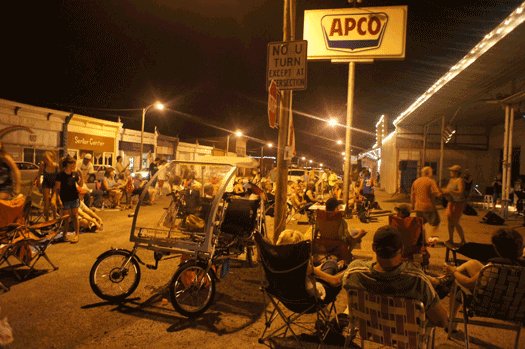

There are two challenges that pure electric vehicles will have to overcome before there’s any chance of them gaining acceptance among the general driving public. One is range, and the other is recharge time. Each new generation of battery technology ups the power-to-weight ratio, giving mid-priced vehicles such as the Nissan Leaf a range of 70 to 80 miles, while cutting-edge products such as the Tesla Roadster are getter better than 200 miles on a charge. That’s plenty of range for around-town driving and mid-range errands, but hardly sufficient for a cross-country road trip.
For that, you’d need to recharge, and recharge time is the current Achilles heel of electric vehicles. Some are able to absorb a partial quick charge in 30 minutes or an hour, but fully recharging the batteries can take anywhere from 3 to 8 hours. Though our vehicle is in many ways unconventional, we still grapple with these twin struggles. Range and recharge time have dictated many aspects of our cross-continent trip. Each day, we must plan our stops and total distance based on educated estimates of battery duration and miles traveled.
After a month on the road, we’ve developed a pretty good idea of our ultralight EV’s effective range. On level ground or rolling hills we often get 55 to 65 miles out of a single charge, while steeper hills can knock us down 40 to 45 miles. These are pretty good numbers for a battery pack with a total capacity of around 1.4 kW, but our vehicle is a far cry from a full-blown automobile, both in terms of comfort and speed. Once the batteries are drained, it takes four hours for a full recharge. We rarely, however, need to stop and charge for the full four hours, because we have created a routine that uses repeated partial charges thought the day.
This is actually much easier for us than it would be for drivers of full-sized electric cars, because we can charge almost anywhere. Our 36 vlt/10-amp hour charger draws less than 400 watts, which means we are able to plug in to any standard outlet without fear of tripping breakers or overheating extension chords. Each time we stop, whether it’s for a cold drink at a gas station, or a dinner break, our first order of business is locating a vacant outlet. We typically ask permission of the business owner, and offer to pay the 2 to 4 cents that our recharge might add to their power bill. To date, no one has demanded payment.
A hour of charging during breakfast, another half hour mid morning, a plug in during a mid-day rest break and with few delays to our daily schedule, we’ve doubled the vehicle’s range. Most drivers wouldn’t have the same degree of leisure time for recharging, however, and would also need to plug in to a substantially larger power supply to perform an accelerated charge. There are a handful of specialized EV charging terminals appearing in select metropolitan markets, but they are still few and far between through most of the country. If electric vehicles stand a chance of going main stream, we will need to invest in a much more widespread network of charging stations, and get recharge times down from hours to minutes.
